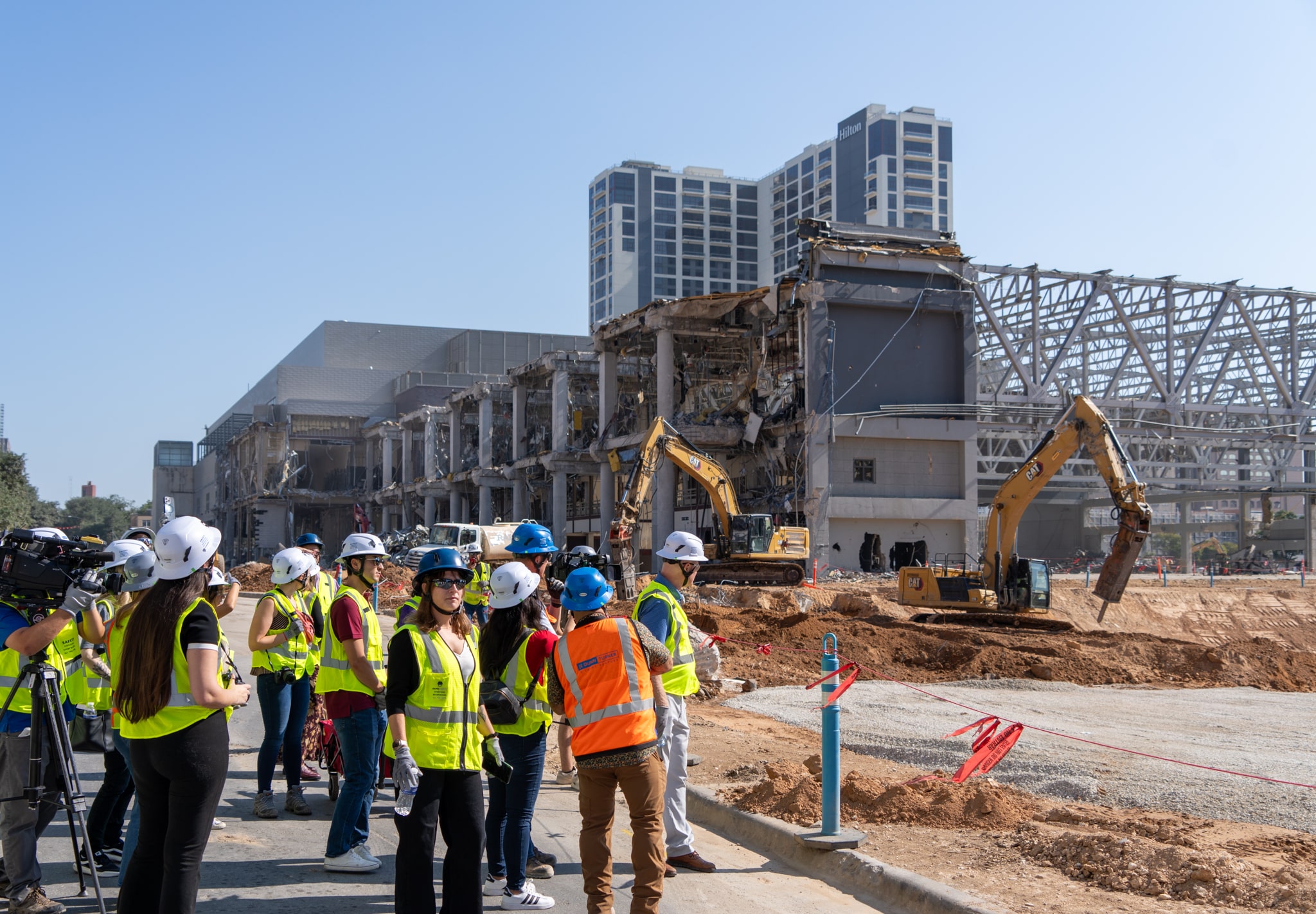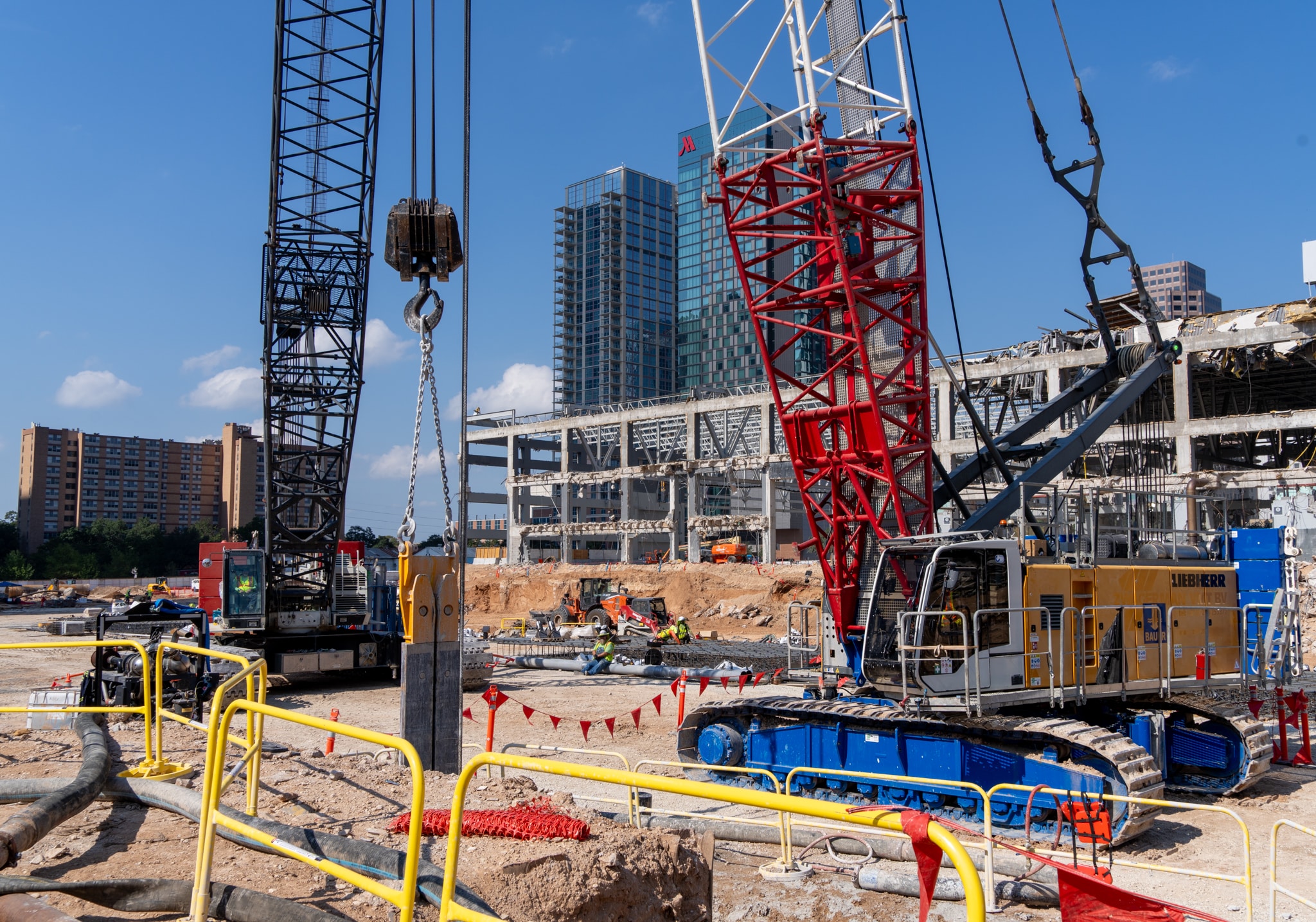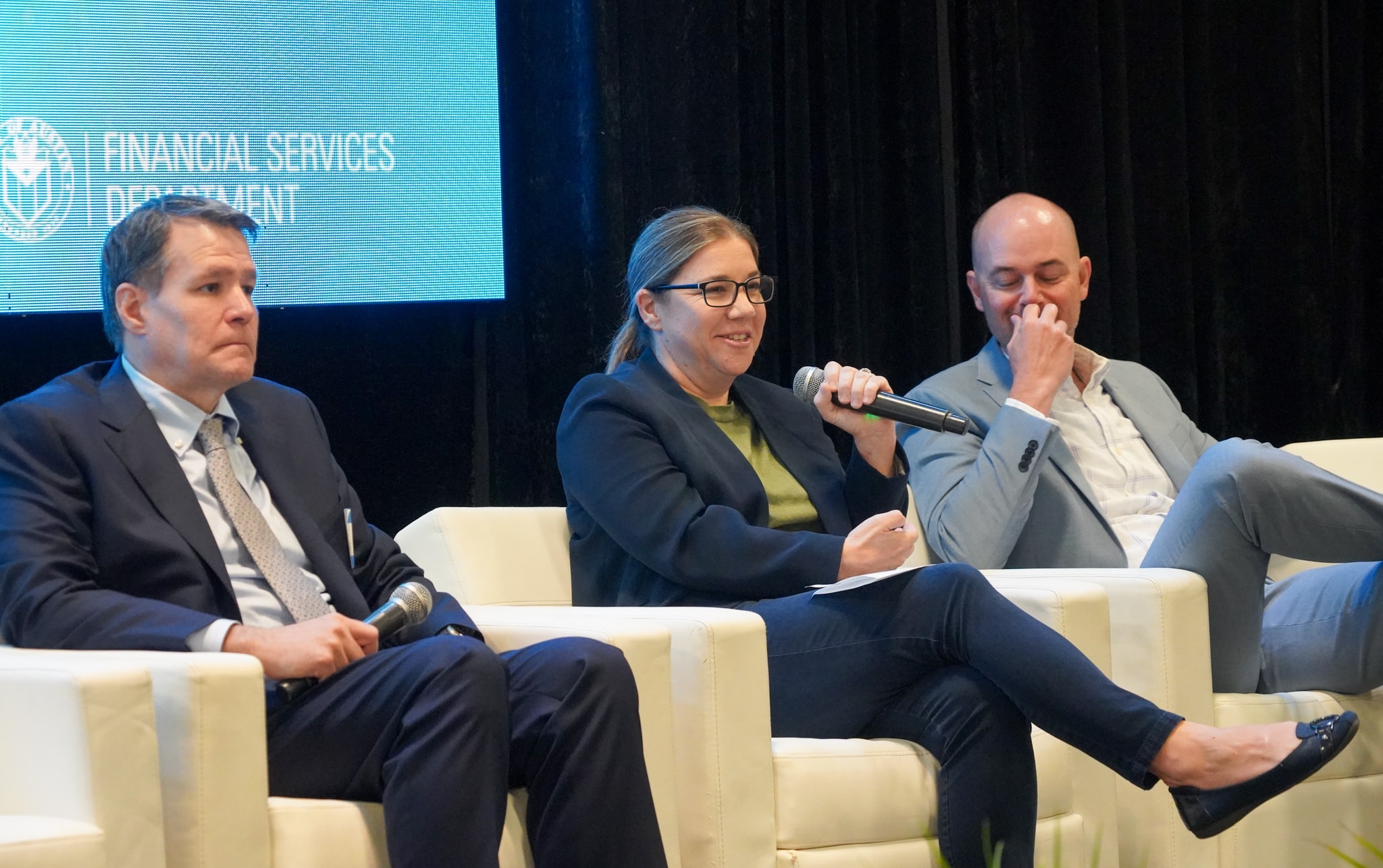The Austin Convention Center expansion and redevelopment has reached an important milestone by starting construction on the diaphragm wall (D-wall). This is the first phase of work that will form the project’s below-ground structure.


Crews are installing the D-wall system along the east side of the site between 2nd and 3rd Streets. To do this, they create narrow, deep excavations with specialized trenching equipment, stabilize the trenches with slurry, and reinforce them with prefabricated rebar cages before pouring tremie concrete. Tremie is a method of delivering concrete through a submerged pipe. The D-wall system will serve as the foundation and earth retention structure for the new Convention Center, providing support for future excavation and below-grade facilities.
The project team incorporates sustainable practices at every phase of the construction. They have recycled or salvaged the majority of demolition materials, including structural steel trusses that will be reused in the new facility. The expansion and redevelopment aim for LEED® Gold certification with performance features such as a solar-ready roof system, 100% renewable energy operation, advanced stormwater management, and decreased embodied carbon through low-carbon steel and concrete, and recycled and locally sourced materials.
Crews will increase construction efforts as heavy excavation starts after the D-wall installation is finished.
The Austin Convention Center is on track to be the first Net Zero Carbon Certified convention center in the world through the International Living Futures Institute (ILFI).
All-electric and powered by renewable energy. To further reduce operational carbon, the Convention Center will be an all-electric building—including the kitchen—powered entirely by green energy sources. The design takes advantage of energy-efficient, greenhouse gas-reducing chilled water from Austin Energy’s district cooling system, as well as heat-recovery chillers that will provide hot water for heating needs.
Solar-ready: Our building will be solar-ready when the downtown electric grid can accommodate solar power. Significant areas of green roof over our large, below-grade exhibit hall provide natural food and habitat for local species as well as improve the building’s energy efficiency and climate control.
Advancing the concrete market in Austin. We’ve been working with concrete suppliers to advance new-to-our-region low-carbon concrete mixes to greatly reduce our embodied carbon footprint. These certified mixes will be available for future public and private projects, which will encourage and improve sustainability efforts throughout the area.
Low-carbon structural steel and rebar. This is being procured through mills in the United States. Bringing carbon into the procurement decision provides lower carbon for this project and is a powerful market signal.
Extensive use of mass timber systems. There are currently only a few examples of local mass timber buildings in Austin. Mass timber systems for the ceiling structure in the Convention Center not only lowers the carbon footprint but also encourages further adoption of this sustainability strategy by the community.
Recycling of key materials. Carpet, metals, and concrete recycling, and the prominent reuse of key materials from the existing Convention Center also contribute to the Net Zero Carbon Certification effort.
Each effort lowers the carbon footprint and advances the Austin market in meeting the Austin Climate Equity Plan.
The City of Austin’s 2025 Small Business Connections Conference took place on August 27 at the Palmer Events Center, drawing hundreds of small business owners eager to learn about upcoming opportunities and City initiatives. Hosted by the Small and Minority Business Resources Department (SMBR), the conference focused on creating access and equity for small, minority-owned, women-owned, and disadvantaged businesses in City Contracts.
A key highlight of the event was the construction update given by Trisha Tatro, Director of the Austin Convention Center Department, who discussed the historic $1.6 billion expansion and redevelopment of the Austin Convention Center. Breaking ground in April 2025 and reopening in 2029, the project will turn the Convention Center into one of the most innovative, sustainable, and accessible meeting venues in the world.
Tatro highlighted that redevelopment is a necessary investment for Austin’s future and a key opportunity for local usinesses. The multi-year project will create many opportunities for small businesses to collaborate and expand,from construction services and trades to supplier contracts and operational support.
Representatives from Austin-Bergstrom International Airport also took part in the program, providing updates on the airport’s expansion. This, along with the Convention Center project, is part of more than $25 billion in planned infrastructure investments in Austin over the next decade.
Beyond project updates, attendees participated in vendor registration, certification, and procurement workshops. They directly engaged with City departments, including the Convention Center, JE Dunn/Turner, the contractors and builder of the project, and other prime contractors through the City Connections Exhibitor Show.
The conference reaffirmed the City’s dedication to keeping Austin’s small businesses central to its growth. For the Convention Center, that involves developing a world-class facility and fostering a stronger, more inclusive local economy.




We’re featuring a partner of the Austin Convention Center expansion and redevelopment in every newsletter. Meet our partner in cultural initiatives.

Established in February 2025, the Office of Arts, Culture, Music, and Entertainment (ACME) serves as the City of Austin’s central hub for creative coordination, funding, and strategic cultural programming. ACME is committed to strengthening the creative sector, expanding access to resources, and providing opportunities that support growth for artists, musicians, and entertainment venues while ensuring that Austin’s creative ecosystem is a vital part of the local economy.
In a landmark partnership with the Austin Convention Center, ACME is distributing $17.7 million through its Art in Public Places (AIPP) program to commission local artists for site-specific installations. This initiative not only directly invests in emerging local talent, but also highlights ACME’s role in supporting artistic excellence and community engagement through public art. This partnership with the Convention Center will help shape Austin’s future as a global destination with a creative ecosystem that is dynamic, sustainable, and uniquely Austin.
The $1.6 billion expansion and redevelopment are entirely funded by the Hotel Occupancy Tax (HOT), a tax paid by tourists who stay at Austin hotels, Project Financing Zone revenues (a rebate of State HOT and sales taxes from hotels in a 3-mile radius around the Convention Center), and Convention Center revenues—not property taxes.
Exciting changes are coming to the Austin Convention Center and your input matters. Take our quick survey.
Plus, don’t miss an update. Sign up for our newsletter to get exclusive insights on the expansion and redevelopment progress.